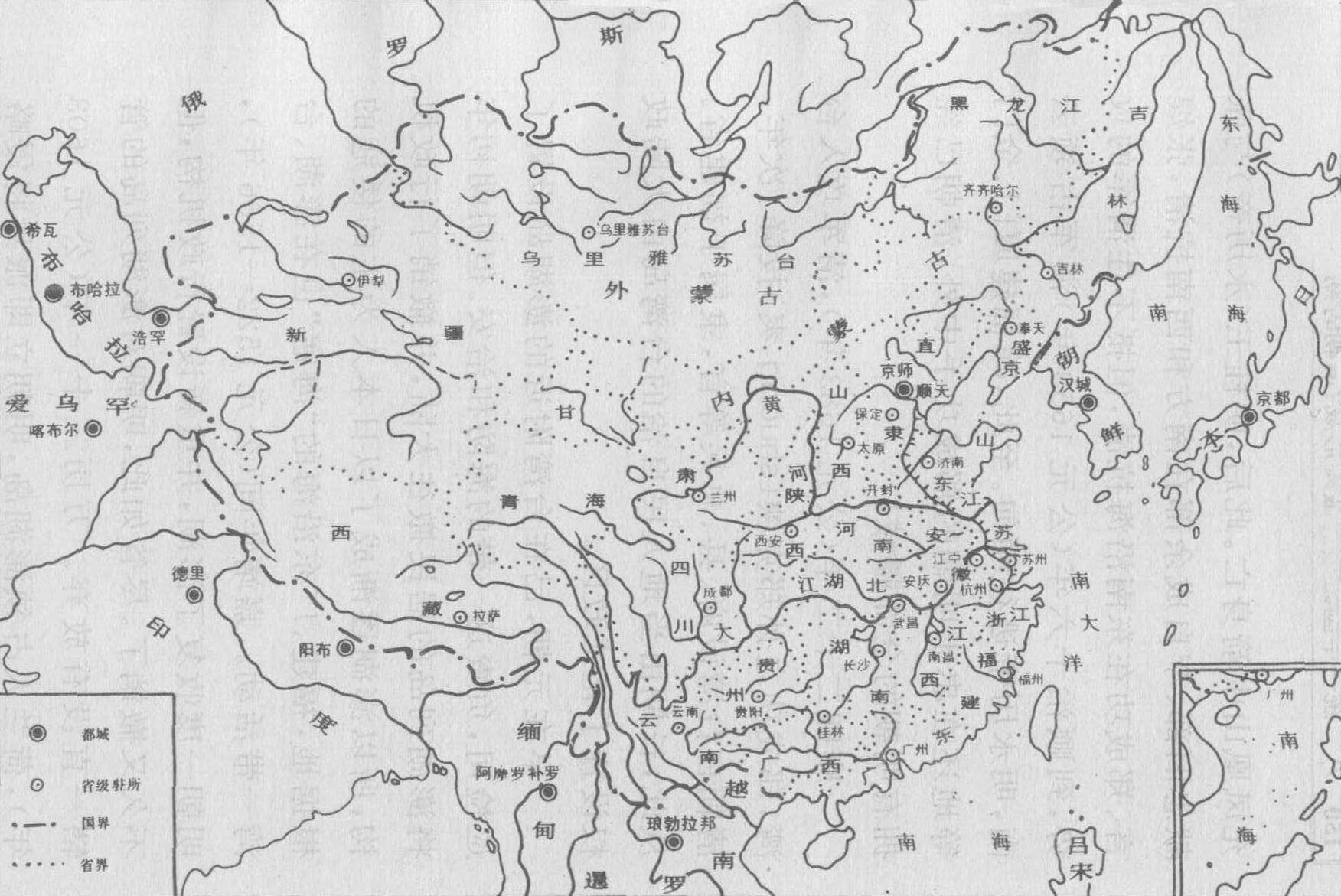Chapter 33 Section 2 From Entry to the Pacification of Taiwan
In March of the seventeenth year of Ming Chongzhen (1644 A.D., the first year of Qing Shunzhi), Li Zicheng's army entered Beijing, Emperor Chongzhen committed suicide, and Ming died.Wu Sangui, the Ningyuan commander-in-chief stationed at Shanhaiguan in the Ming Dynasty, led the Qing army into the pass, and together with the Qing army, they defeated Li Zicheng's army.In May, Li Zicheng's army retreated, and the Qing army occupied Beijing.In September, Fulin (the ancestor of the Qing Dynasty) arrived in Beijing. In October, he became the emperor, and Beijing became the capital of the Qing Dynasty.The Qing army attacked the remnant regime of the Ming Dynasty and the peasant regime of Li Zicheng and Zhang Xianzhong in separate routes: After the Qing army went south, they captured Yangzhou in the second year of Shunzhi, crossed the Yangtze River, surrendered to Nanjing, and captured King Mingfu (Emperor Hongguang).In the first month of the same year, the Qing army broke through Tongguan and entered Xi'an. Li Zicheng's army retreated steadily and passed through Shangzhou, Xiangyang, and Wuchang. Li Zicheng was killed in Jiugong Mountain, Tongshan County, Hubei.In the third year of Shunzhi, the Qing army invaded eastern Zhejiang, and the king of Minglu fled into the sea.The Qing army entered Fujian, and the king of Ming Tang (Emperor Longwu) was captured.Guangzhou was broken in December, and Emperor Wu of the Ming Dynasty committed suicide.Qing soldiers entered Sichuan, and Zhang Xianzhong was killed by an arrow in Fenghuang Mountain in the Western Qing Dynasty.Afterwards, Ming Guiwang (Emperor Yongli), Zhang Xianzhong's old troops, and Li Zicheng's remaining troops fought against the Qing in the south and southwest. Zhang Huangyan and Zheng Chenggong fought against the Qing in the southeast coast, but they could not withstand the offensive of the Qing army. In the 16th year of Shunzhi (AD 1659) The Qing army occupied Yunnan, and Emperor Yongli of the Ming Dynasty fled to Burma.So far, the Qing Dynasty has owned all the territory of the Ming Dynasty, except Xiamen, Jinmen and other places in Fujian, which are still in the hands of Zheng Chenggong who is loyal to the Ming Dynasty.

Situation map of the Qing Dynasty
In the twenty-second year of Kangxi (AD 1683), the Qing army invaded Taiwan, and Zheng Keshuang (Shuang Shuang), the grandson of Zheng Chenggong, surrendered.In the following year, the Qing Dynasty set up government offices, counties, general soldiers and other officials in Taiwan, which belonged to Fujian Province.Since then, the island of Taiwan, long self-governed by the local people, has been established as an official administrative region by the mainland regime.
As early as the Yuan Dynasty, an inspection department was set up on Penghu Island near Taiwan to be responsible for coastal defense and public security in this area.However, in the early years of the Ming Dynasty, the residents of the Penghu Islands were evacuated to the mainland, and the administrative organization was abolished. Therefore, Penghu gradually became the base of Japanese pirates, mainly Japanese. The "sea pirates" along the coast of Fujian and Guangdong were also active in Penghu and Taiwan. .During the Jiajing period (1522-1566 A.D.), the Ming Dynasty once regained Penghu and re-established the administrative organization, but it was revoked soon.Despite this, the Ming Dynasty never gave up its jurisdiction over the Penghu Islands.In the thirty-first year of Wanli (AD 1603), the Dutch occupied Penghu Island, and the Ming Dynasty immediately sent troops to drive the invaders away.In the second year of Tianqi (1622 AD), the Dutch occupied Penghu for the second time. In the fourth year of Tianqi, the Ming army drove them away and stayed there for a long time until the end of Ming Dynasty.
The relationship between Taiwan Island and the mainland has always been very close. In the Ming Dynasty, many mainlanders immigrated to Taiwan. Starting from Jiajing, mainland "sea pirates" Lin Daogan, Yan Siqi, Zheng Zhilong (father of Zheng Chenggong) and others successively established their own in Taiwan. regime.Although the Ming Dynasty did not set up an administrative area on the island, the Ming army entered Taiwan more than once when chasing down "sea bandits", and has always listed Taiwan and the nearby sea as a military defense zone.After the Dutch were expelled from Penghu for the second time, they transferred to Taiwan and occupied the Tainan area. In 1626 (the sixth year of Mingqi), the Spaniards invaded and occupied the area of Taipei.At that time, Zheng Zhilong established a regime in Beigang in central Taiwan, and most of the local tribes were governed by their own leaders. In 1642 (the fifteenth year of Ming Chongzhen), taking advantage of Zheng Zhilong's activities turning to the mainland, the Dutch invaders monopolized Taiwan. In 1661 (the 18th year of Shunzhi in the Qing Dynasty), Zheng Chenggong decided to change to Taiwan as his base because of his disadvantage in resisting the Qing Dynasty in the mainland, so he sent troops from Xiamen to drive out the Dutch invaders.At the beginning of the next year, the Dutch invaders surrendered and withdrew. Zheng Chenggong and his son Zheng Jing set up three pacification divisions and subordinate prefectures and prefectures in Taiwan and Penghu, and established a local government that continued to be loyal to the Ming Dynasty until 1683 (the 20th year of Emperor Kangxi of the Qing Dynasty). two years).

Situation map of the Qing Dynasty
